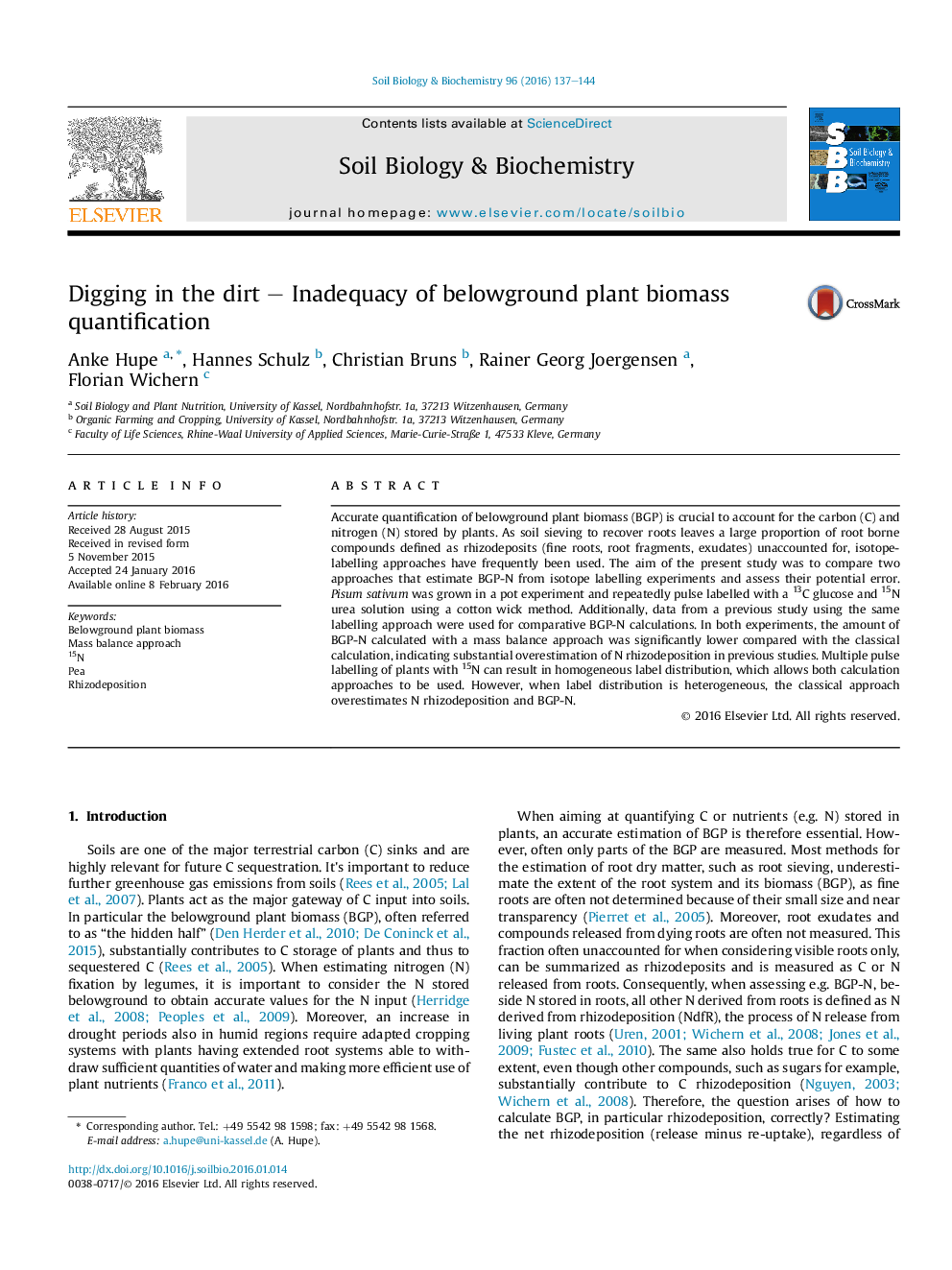| Article ID | Journal | Published Year | Pages | File Type |
|---|---|---|---|---|
| 2024355 | Soil Biology and Biochemistry | 2016 | 8 Pages |
Abstract
Accurate quantification of belowground plant biomass (BGP) is crucial to account for the carbon (C) and nitrogen (N) stored by plants. As soil sieving to recover roots leaves a large proportion of root borne compounds defined as rhizodeposits (fine roots, root fragments, exudates) unaccounted for, isotope-labelling approaches have frequently been used. The aim of the present study was to compare two approaches that estimate BGP-N from isotope labelling experiments and assess their potential error. Pisum sativum was grown in a pot experiment and repeatedly pulse labelled with a 13C glucose and 15N urea solution using a cotton wick method. Additionally, data from a previous study using the same labelling approach were used for comparative BGP-N calculations. In both experiments, the amount of BGP-N calculated with a mass balance approach was significantly lower compared with the classical calculation, indicating substantial overestimation of N rhizodeposition in previous studies. Multiple pulse labelling of plants with 15N can result in homogeneous label distribution, which allows both calculation approaches to be used. However, when label distribution is heterogeneous, the classical approach overestimates N rhizodeposition and BGP-N.
Related Topics
Life Sciences
Agricultural and Biological Sciences
Soil Science
Authors
Anke Hupe, Hannes Schulz, Christian Bruns, Rainer Georg Joergensen, Florian Wichern,
